
The visa voyage
Belarusian native Maksim Dolmat spent hundreds of hours and thousands of dollars learning English, completing his visa application and studying for exams for a chance at his American dream. He is now a green card–carrying postdoctoral fellow at the University of California San Diego.
Andrea Pereyra viewed the U.S. as the mecca of higher education, so she pursued a postdoctoral fellowship outside her homeland, Argentina — and constantly faced the pressures of the visa renewal process. Seven years later, Pereyra, now assistant director of postdoctoral life design at Johns Hopkins University, was recently awarded her green card.
Ankita Arora came to the U.S. from India in pursuit of a postdoctoral fellowship and has been waiting for a green card for almost a decade. She wants to be a science writer, her true passion, but feels stuck as an experimental scientist.
When Ese Ekhator arrived in North Carolina, she found the climate much colder than her native Nigeria, and American food made her ill. She overcame these challenges to obtain a Ph.D. and is now a postdoctoral fellow at the University of Pittsburgh School of Medicine.
Anna Serquiña earned her M.D. in the Philippines more than 20 years ago, and then sought more training and a better life in the U.S. Like many female immigrants, she endured both racial and sexual discrimination. Serquiña is now a U.S. citizen, a mother and a research scientist at the National Institutes of Health.
Immigrant scientists make up more than half of the science, technology, engineering and mathematics graduate students and the doctoral-level scientific workforce in the U.S. However, changes to the visa process, such as increased fees and unprecedented wait times, may threaten these researchers’ ongoing contributions.
“People say the current immigration system is broken, and that’s an understatement,” Steve Springer, director of regulatory practice liaison at the NAFSA: Association of International Educators, said. “However, the current administration is friendly toward immigration and has been trying to make some meaningful changes.”
From Belarus to Birmingham
Seven years ago, Maksim Dolmat stood outside the tall gates of the U.S. embassy in Belarus, a small country bordered by Russia, Poland and Ukraine. He wore his best clothes and carried little more than his passport and visa paperwork.
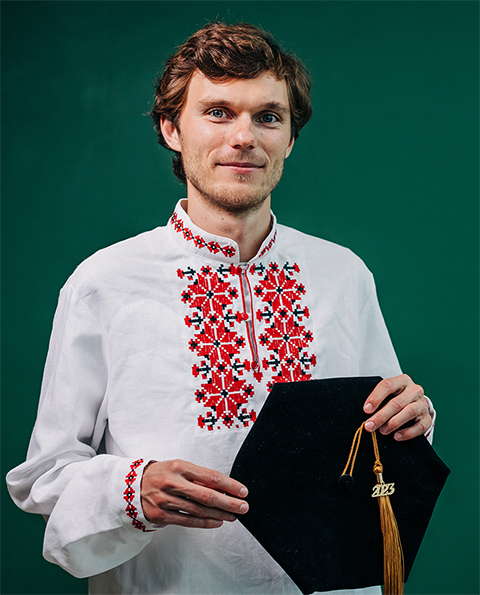
“I was so scared,” Dolmat said. “I didn’t tell anyone because I knew my chances of getting to America were so low.”
When he decided to pursue his studies across the Atlantic, Dolmat did not speak English and had no family members in the U.S. He took a leap of faith and contacted a Russian immigrant who was a principal investigator at the University of Alabama at Birmingham.
He emailed her in both his native Russian and English, hoping she would respond in Russian. To his distress, he received a reply in English.
That exchange began a six-year partnership.
After an informal virtual interview, the professor promised to advocate for Dolmat if he applied to the graduate program at UAB. He spent hundreds of dollars on an English tutor and a flight to Moscow just to take the Graduate Record Examinations.
“The GRE is pretty challenging,” Dolmat said. “I was so afraid to take it because I had spent so much money, and there was a chance for me to fail. When I saw my (preliminary) score on the screen, I almost cried.”
His admission to the graduate program at UAB was the beginning of another steep learning curve.
“During my first outing with the lab, I maybe said two sentences the entire time,” Dolmat said. “It’s one thing to take a test in English, and it’s another to speak with Americans who jump around conversation topics constantly.”
F is for fine
Most graduate students like Dolmat come to the U.S. to study on a university-sponsored F-1 visa, which is valid for up to five years. However, with STEM Ph.D.s now taking an average of 6.4 years to complete, these limits are becoming outdated.
The F-1 system worked relatively well for Dolmat, he said, as long as he didn’t leave the U.S.
Some countries, including Belarus, only issue students a one-year F-1 visa. After that, students are allowed to stay in the U.S. on a valid I-20 form, a “Certificate of Eligibility for Nonimmigrant Student Status.” However, if they want to leave the country to visit family or attend a scientific conference, they must renew their F-1 abroad before returning to the U.S., which can take months.
Dolmat never returned to Belarus during his Ph.D. “I was too scared of the processing times.”
Embracing the English language was a challenge for Dolmat. So was adapting to the scale of the science and the workload. Belarus only had two nuclear magnetic resonance machines in the country, he said; at UAB alone, he had access to five.
“As an international student, you can get trapped in this bubble thinking ‘I'm here, I need to get a green card, but to get a green card, I need a publication and to get certifications,’” Dolmat said. “So you have this constant load on you that you need to work more and more and more, but it's not always true. You can easily burn out.”

Dolmat earned his Ph.D. and transitioned from an F-1 visa to a self-sponsored green card based on his extraordinary scientific achievements. The visa application process took him over two years and thousands of dollars in immigration and lawyer fees.
He considered leaving the U.S. to pursue a career elsewhere.
China, Canada, the United Kingdom and Australia boast programs to attract and retain scientific talent. Immigration lawyer Paul Herzog said scientists are likely to have more success immigrating to Canada rather than the U.S.
Authorities judged Dolmat’s green card application on the number of papers he published and their impact, measured in citations, during his Ph.D. He was lucky that his field, nanotechnology, is booming, he said. From 2003 to 2023, the number of papers published on nanotechnology increased twelvefold.
For researchers in smaller labs or fields, like Ankita Arora, a science writer and researcher in Colorado, demonstrating extraordinary ability on a green card application can be nearly impossible.
“You have to be competitive in terms of the number of papers and citations you have,” Arora said. “My background is in RNA. Right now, the field is picking up, but that was not the case 10 years ago.”
Argentinian in America
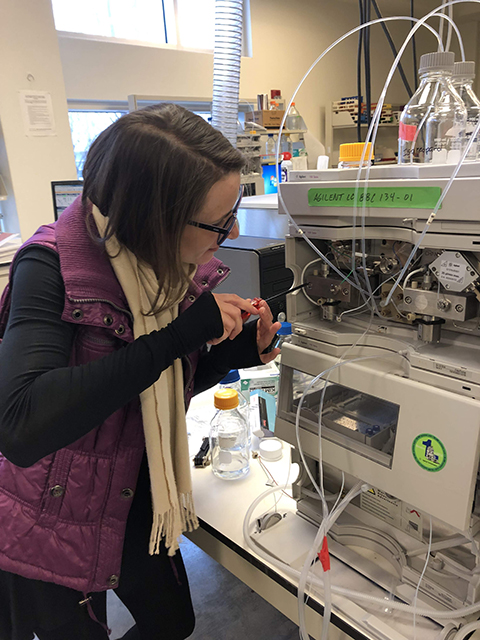
After completing his Ph.D., Dolmat moved across the country to pursue a postdoc at UC San Diego. As a green card holder, he has the freedom and flexibility to pursue the career he wants.
Most immigrants do not enjoy the same autonomy.
Andrea Pereyra first visited the U.S. as a Ph.D. student to work temporarily in a collaborator’s lab. She liked it so much that she decided to pursue postdoctoral training in the States.
“The U.S. is a kind of mecca for higher education, science, technology, advancement and progress,” Pereyra said. “I felt like the U.S. matched my pace, and I liked the hardworking environment. The U.S. has a very data-oriented and data-driven spirit. It was a new place for me, and everything was new and shiny.”
When she secured a postdoctoral position at Purdue University, the university offered her a J-1 visa, which is renewable for up to five years, and Pereyra thought nothing of it.
“A J visa is the easiest way to come to the U.S. as a scholar scientist,” Pereyra said. “I didn’t know better at the time. I trusted the university”.
Pereyra soon realized that her J-1 visa was going to cause her a lot of stress. It was only valid for 365 days, based on her one-year postdoc contract with the university. If she wanted the freedom to travel outside of the U.S., she had to take time off her research each year, go back to her home country and renew her visa on her own dime.
Sarina Neote, public affairs director for the American Society for Biochemistry and Molecular Biology, says this visa system hurts the U.S. economy. “This process squanders the substantial investment made in these scientists by the U.S. research enterprise and contradicts their tremendous value to U.S. competitiveness and innovation.”
According to a recent National Science Foundation report, a rising number of U.S. citizens with Ph.D.s in the biomedical sciences are not pursuing postdoctoral positions. This comes on the heels of a “postdoc shortage” in academia. These statistics underscore the need for international scientists, Neote said.
Nonimmigrant intent
A J-1 visa, also known as a nonimmigrant visa, is designed for an individual to engage in temporary knowledge exchange in the U.S. Each time Pereyra returned to Argentina to renew her visa, she had to prove that she planned to return to her homeland after completing her postdoc.
“You feel like you're being evaluated like you're seven years old again, and you're being given a test in front of all your schoolmates in another language,” Pereyra said.
Proving nonimmigrant intent is the only time in the U.S. legal system that someone is guilty until proven innocent, Springer said.
“When you go to the U.S. consulate, it is your duty to prove to them that you do not plan to emigrate,” Springer said. “It’s really hard to do, especially if you are 18 years old.”
Pereyra had learned English when she was six years old, but she said she still felt uncomfortable at the embassy.
“You see people getting denied because they don’t have enough ties to Argentina, and (the immigration officials) fear that you might be at risk of illegally immigrating or overstaying your visa,” she said. “You feel safe because you are sponsored by the university, but you never know what (the officials) are going to say.”
Springer advised having an elevator pitch about your plans ready for the immigration officer at the embassy.
Even after getting a visa stamp at the U.S. embassy, immigrants can still be denied entry at the U.S. border, Pereyra said.
“A visa is just a ticket to come knock on the border,” she said. “The officer at the border has the ultimate decision on whether or not to let you in.”
Both Pereyra and Arora advise trying to avoid a J-1 at all costs. Unlike a student on an F-1 visa, who can be granted a grace period to find work, once a postdoc with a J-1 visa completes their position, they must return home for a minimum of two years. Getting a waiver is possible, but extremely difficult and time consuming, said Arora.
Immigration alphabet soup
After almost five years, Pereyra grew tired of jumping through hoops to renew her J-1 visa; she petitioned her university for H-1B sponsorship. An H-1B visa is available to those in a specialty occupation, such as science, and allows immigrants to consider permanently moving to the U.S.

Pereyra had married a U.S. citizen, so a dual intent visa better suited her needs.
“I had to be very adamant on my request,” she said.
Universities always offer postdocs a J-1 visa because it is cheaper and easier for them to file, Springer said.
After eight months, Pereyra finally got her H-1B, putting her one step closer to officially immigrating. However, she was still subject to a one-year renewable contract. As with her J-1, every year Pereyra had to travel abroad to a U.S. embassy to renew her visa.
Herzog advises advocating for a 3-year work contract to qualify for an extended visa, thus avoiding the annual pressure to go home and renew.
The U.S. Department of State recently announced a pilot program allowing H-1B visa holders to renew domestically, which could eliminate the need for excessive trips abroad.
When it came time for Pereyra to apply for her green card, she wanted to complete the process based on her own merits, rather than using a marriage-based sponsorship, she said. However, her lawyer advised her to apply for a family-sponsored green card, based on time, complexity and cost.
“My lawyer told me to swallow my pride,” Pereyra said.
She took the path with fewer obstacles. After 18 months, this Argentinean M.D./Ph.D., finally got her green card.
It matters where you come from
Belarus and Argentina are small countries, with populations of 9.5 million 46 million, respectively, so Dolmat and Pereyra faced relatively short waiting times for their visa renewals.
India has a population of 1.4 billion, and millions of Indians come to the U.S. each year for school or work. For them, legal permanent residency can be a life-long pursuit.
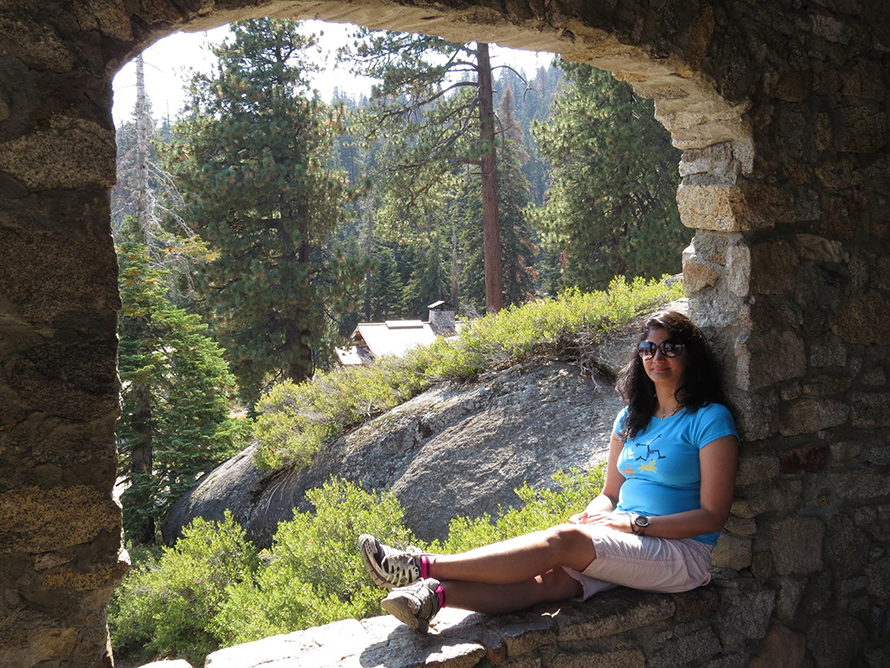
Arora immigrated to the U.S. more than eight years ago and has been fighting the system ever since, she said.
After “getting stuck” in a J-1 visa for five years, Arora said she struggled to find a job for her to remain in the U.S. Eventually, her husband, an engineer with a master’s degree, applied for a green card with Arora listed as a dependent, even though she has a successful, independent scientific career.
That was in 2014. They still face years of wait time.
Each country is allowed 7% of the 140,000 employment-based green cards awarded by the U.S. per year. The number of Indians that apply each year dwarfs the number of green cards awarded.
“The system is discriminating against people based on the country they are born in, which they have no control over,” Arora said.
Like Dolmat’s, Arora’s family green card application is judged on merit. However, as Indians, Arora and her husband face intense competition.
“The yardstick that they're measuring us with is different than the yardstick they're measuring somebody else with,” Arora said. “And all of this would not be an issue if I wasn’t from India.”
Arora is now considering filing for her own green card. Because she has a Ph.D., her application will be placed in a smaller pool than her husband’s. However, even for Indians with extraordinary ability and the highest education, estimated wait times for a green card can be more than three years.
If a person from India applied today, they could die before receiving their green card; wait times surged last year to 134 years. A staggering 1.1 million Indians are waiting for a green card, and only 8% of those individuals will be awarded one this year.
Recently, the United States Citizenship and Immigration Services, or USCIS, increased the fees that employers, such as universities and companies, pay to file an H-1B visa. The agency said these increases will help reduce the backlog of applications. However, Springer said major reforms are needed.
“The last major updates to this system were 50 years ago,” he said. “It was created for a world where people weren't moving around like they are today.”
Walking on eggshells
While they wait, green card applicants must continuously prove their importance to the U.S. scientific enterprise and do nothing to lower their chances, Arora said; a person cannot change jobs or even think about changing fields.
“This is definitely an area where immigration law has not caught up with the way the world works,” Herzog said.
Arora, an ASBMB Today contributor, wants to pursue a career in science writing, she said. However, such a career switch would set off red flags with USCIS.
“Once you have your green card, you can switch fields,” Arora said. “A green card allows you that freedom. But until you cross that hurdle, you are in some ways forced to be within a straight-line career path.”
A narrow path

Ese Ekhator immigrated from Edo State, Nigeria, where she was pursuing a master’s degree at the University of Benin, Nigeria. Through this program, she met a professor who offered her an opportunity to do research in the U.S.
“I was so scared because we didn’t have a lot of money, and I didn’t know how I was going to sponsor myself,” Ekhator said.
Her adviser let her start out as a research assistant, earning a salary to support her new life in the U.S.
When she arrived at North Carolina A&T University in January 2018, she didn’t have the right clothing for the Carolina winters.
“When I first moved here, I cried a lot,” Ekhator said. “The food was different; the weather was different; everything was just different. I was really suffering.”
After working as a research assistant for a few months, Ekhator transitioned to a Ph.D. program.
There were moments when she considered moving back to Nigeria, Ekhator said. Her advisers helped her cope.
In 2024, Ekhator successfully defended her thesis. She said she dreamed of a job in industry. However, few of the positions she was interested in would sponsor immigrants, Ekhator said.
According to a recent report in PLOS One, U.S. citizen status significantly influences career choice. Non-U.S. citizens are more likely to pursue a research-intensive career. Arora said this may be because immigrants need to prove their scientific worth.
“It became a real problem for me,” Ekhator said.
After speaking with her adviser, she decided an academic postdoc would be her best option.
“Maybe someday I will find my way back to industry,” she said.
Most companies willing to sponsor an H-1B visa are on the coasts, where the cost of living can be a hindrance, especially for immigrants who have additional expenses.
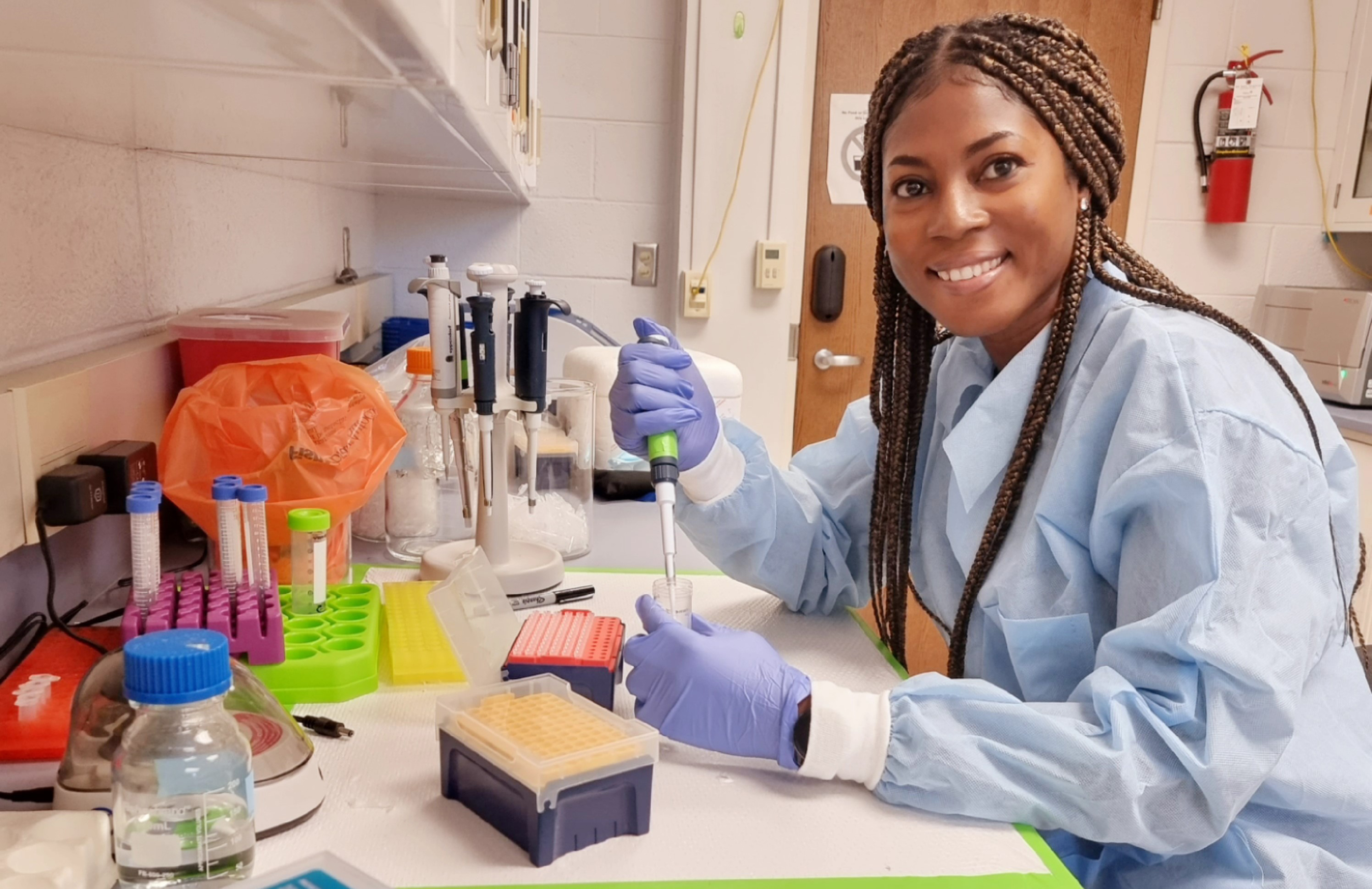
The American Dream
With H-1B fees rising, fewer companies, especially small and midsize startups, may be willing to sponsor immigrant scientists.
Anna Serquiña is a Filipino research scientist at the National Institutes of Health, who immigrated to the U.S. to pursue a Ph.D. At the time, she could only afford to apply to four programs; but eventually obtained her Ph.D. from the University of Massachusetts.
For many women, including Serquiña, immigrating to the U.S. is a major milestone, and they take pride in overcoming challenges.
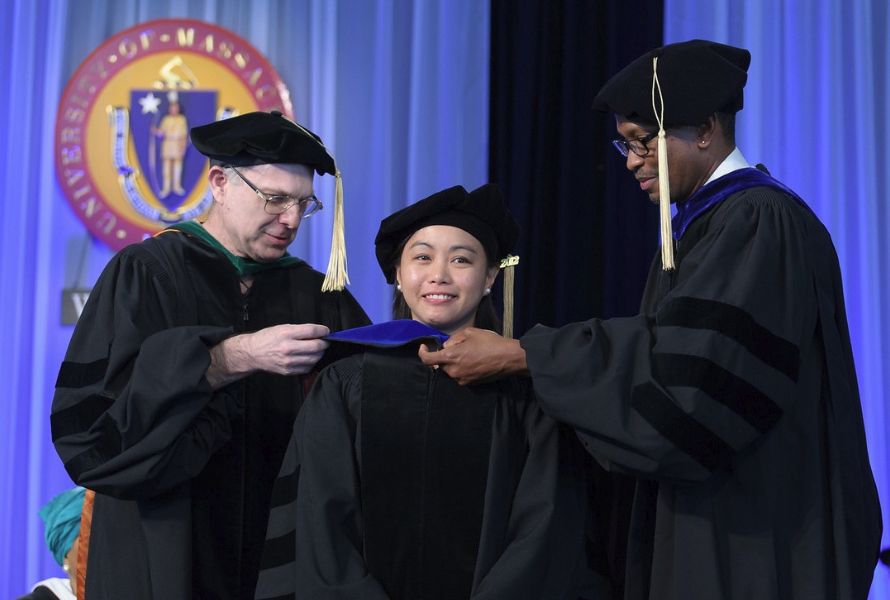
On Serquiña’s trip home after interviewing for Ph.D. programs, she was racially profiled.
“I was pulled off the airplane, and an officer rifled through my purse, asking me questions,” she said. “It was so scary. … He accused me of being a ‘mail order bride.’”
Almost 15 years later, Serquiña still struggles to find her identity as a Filipino in the U.S.

However, she said all the challenges associated with immigrating were worth it. When she obtained her U.S. citizenship, she said she felt a weight had been lifted from her shoulders. She was able to train in a specific field, become technically proficient, publish papers and collaborate with world-renowned scientists.
“I’m actually living a career path I only dreamt about before,” Serquiña said. “So, in a way, that's my American dream; it’s being able to survive on what I earn and have a car and a roof over my head. I never would have been able to afford these on my own in my home country.”
Pereyra, who describes herself as a “proud daughter of Argentina's public education system from kindergarten to graduate school,” is still finding out where she belongs in the U.S.
“I’m still trying to figure out what the American Dream is,” Pereyra said.
Dolmat is on his way to becoming a U.S. citizen while working as a postdoc. He has a surfboard and a framed journal cover showcasing one of his best scientific papers in his California apartment. This year, using the money he has made in the U.S., he is gifting his parents a trip to Italy.
“America is great for opportunities,” Dolmat said. “There is no doubt about that.”
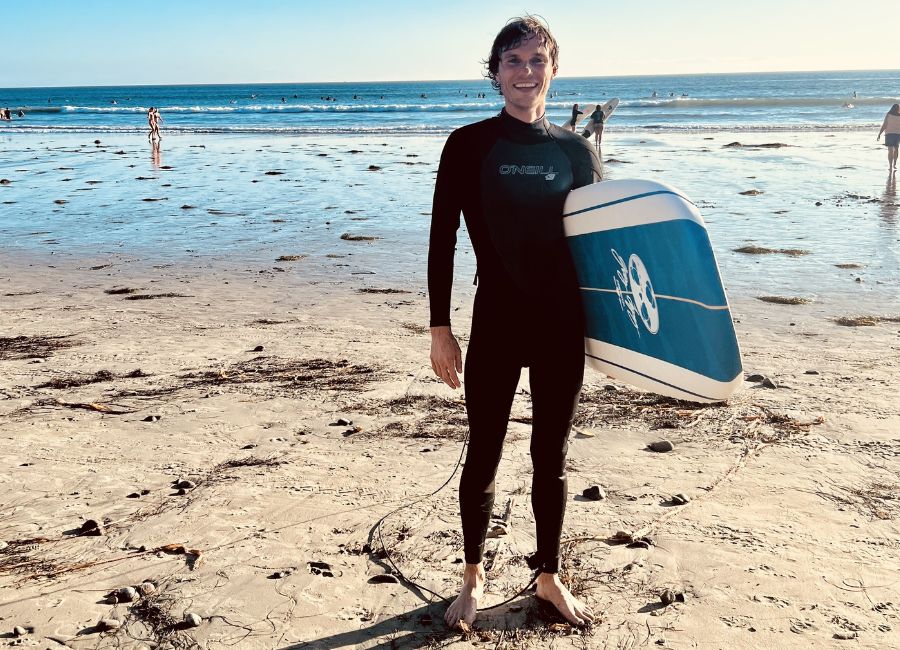
Enjoy reading ASBMB Today?
Become a member to receive the print edition four times a year and the digital edition monthly.
Learn moreFeatured jobs
from the ASBMB career center
Get the latest from ASBMB Today
Enter your email address, and we’ll send you a weekly email with recent articles, interviews and more.
Latest in Careers
Careers highlights or most popular articles

Building the blueprint to block HIV
Wesley Sundquist will present his work on the HIV capsid and revolutionary drug, Lenacapavir, at the ASBMB Annual Meeting, March 7–10, in Maryland.

Upcoming opportunities
Present your research alongside other outstanding scientists. The #ASBMB26 late-breaking abstract deadline is Jan. 15.
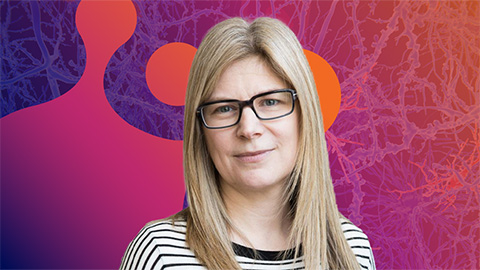
Designing life’s building blocks with AI
Tanja Kortemme, a professor at the University of California, San Francisco, will discuss her research using computational biology to engineer proteins at the 2026 ASBMB Annual Meeting.

Upcoming opportunities
#ASBMB26 late-breaking abstract submission opens on December 8. Register by Jan. 15 to get the early rate on our Annual Meeting.
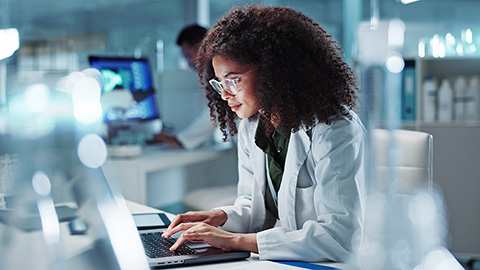
Make your abstract stand out
Ensure your research is impossible to overlook. Get quick, practical reminders for crafting an abstract that attracts readers and helps you build connections at the conference.
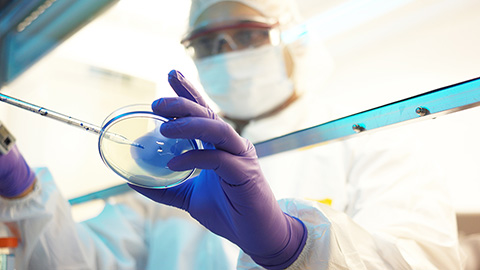
Inside industry postdocs
As more Ph.D. scientists look beyond academia, industry postdocs offer a new kind of training, where mentorship meets mission-driven research. Fellows at Pfizer and Genentech share how these programs prepare them to translate discovery into impact.

